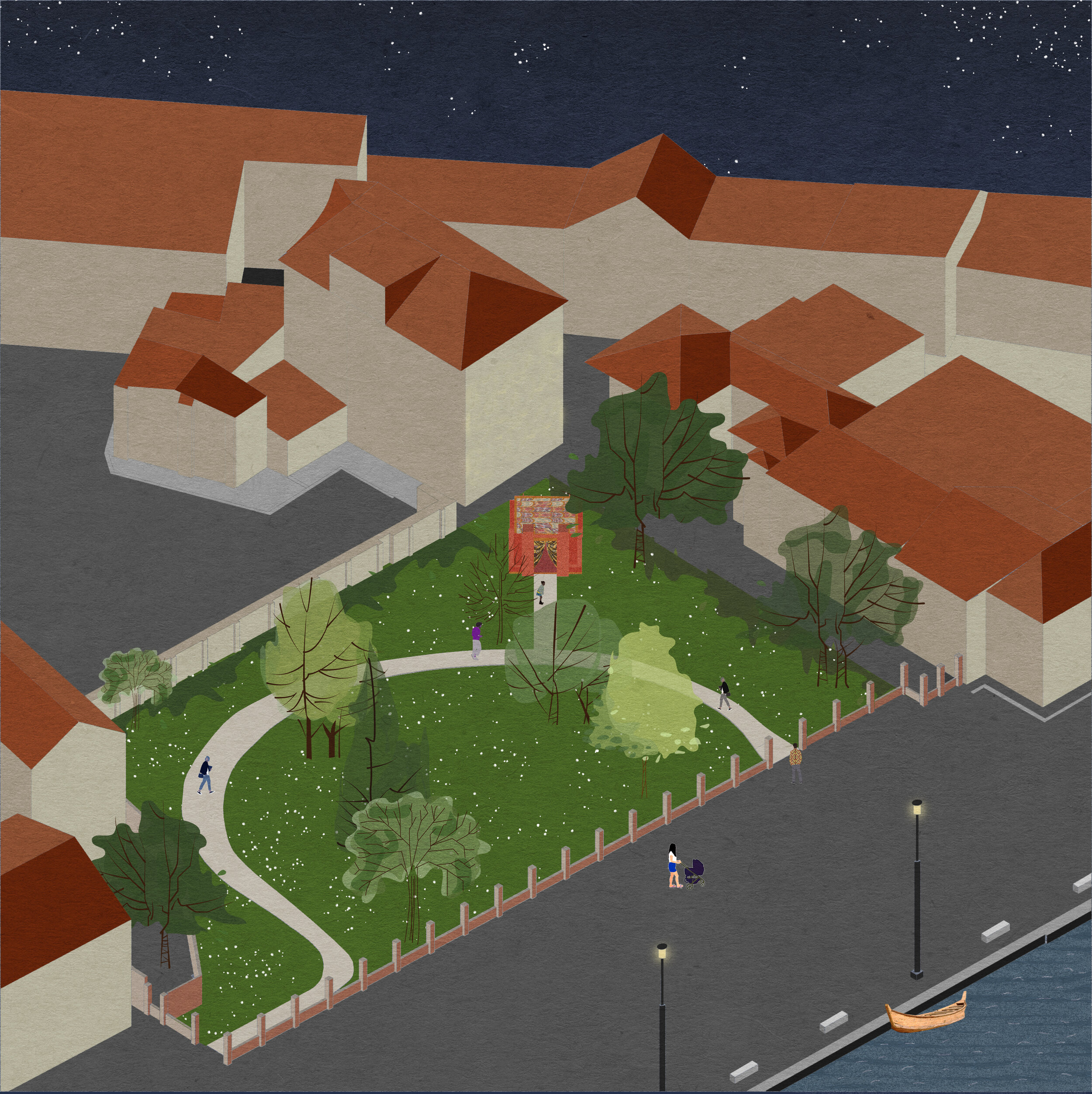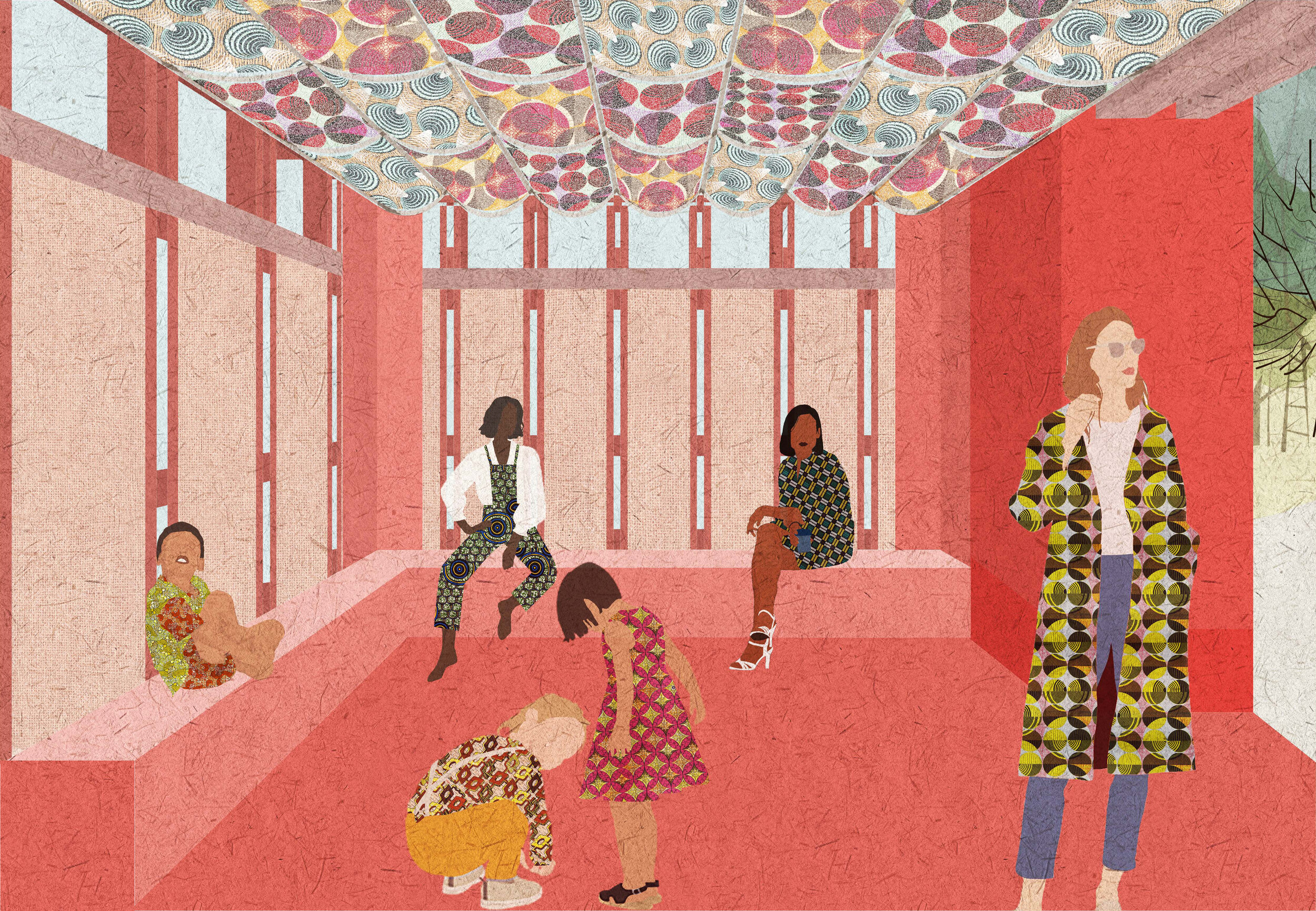
The Course of Empire at the Venice Biennale
Support Studio 2.2 share their research on the global stage.
An important opportunity to support student led research on a global stage.
Time Space Existence - How Will We Live Together?
Over the last two years, Studio 2.2, a second year design studio within the Department of Architecture and Landscape, has collaborated with Studio NYALI, a design research partnership between Nana Biamah-Ofosu and Bushra Mohamed to investigate the African compound typology.
In 2019-20, the studio taught by Nana Biamah-Ofosu and Michael Badu in collaboration with Mary Johnson and Bushra Mohamed studied how this housing typology could be used to generate more thoughtful responses to urban growth and continuity in African and Western cities, with students designing housing projects in Accra and London.
Through our collaboration with ArchiAfrika, Studio NYALI and Studio 2.2 have been invited to exhibit as part of the The European Cultural Centre’s Time Space Existence exhibition taking place in Venice alongside the 17th International Architecture Exhibition, La Biennale di Venezia.
We need your help to get us to the finish line by raising £10,950 to meet our £30,000 fundraising goal for the construction of the ArchiAfrika/Jamestown Café Pavilion 2021. The pavilion is part of the European Cultural Centre’s programme of events in Venice running until November 2021. So far, through your incredible support, we have raised £19,050, which has covered material costs and part of our participation fees.
We would like this experience to be as cost neutral for the wonderful students taking part in the construction process and with your help, we can make this possible!
Read on to learn more about the project and how you can help.

Se wo were fi na wosankofa a yenkyi
It is not wrong to go back for that which you have forgotten.
- Twi Proverb
The Pavilion:
The ArchiAfrika Pavilion located in the Giardini della Marinaressa, a park adjacent to the entrance of the Giardini of Biennale, serves as a gathering place, a point of reference for all who visit the ArchiAfrika’s contribution to the 17th International Architecture Exhibition. It will be a place to gather, to exchange cultures and from where to go back for that which we have forgotten; how to live together.
Like its predecessor in Jamestown, Old Accra, it is a space to gather, share and imagine an African future. The 5x5m installation, set in Giardino della Marinaressa, allows people to gather inside while respecting current social distancing measures. Externally, its four expressive corners, act as seats and resting spaces. The bright and colourful tapestry that forms its roof is reminiscent of the original Jamestown Cafe in Accra, where rich Ghanaian wax prints provide shade and add a joyful presence to the courtyard. This language of colour, pattern and form is extended to the enclosure externally. Made from painted jute fabric, each panel tells a story, representing a particular aspect of Ghanaian culture and heritage that speaks to the essence of living together. In comparison, the simple, natural finish of the internal jute lining, allows the roof to become the main focus while inside the pavilion.
Every interaction with the installation changes its character. As people engage with its physical form, their bodies, their own form, becomes part of the architecture, like the totems, carvings and sculptures in Africa’s building culture.
The Build and Exhibition
5th July - 24th July 2021
We will be building the pavilion in Venice as a build project with our collaborators 121 Collective and a team of student participants from the Faculty of Art and Architecture. The build process will conclude with an exhibition and symposium on Thursday, 22nd July 2021.
We will be presenting our ongoing research and design projects based on the African compound house. The exhibition will focus on the design projects situated in Accra, Ghana which engage with local knowledge, skills and expertise to promote architecture for a pluralist society. The works will explore how this historic housing typology could be used to generate more thoughtful responses to urban growth and continuity in African and Western cities.
The exhibition will invite reflections on the ongoing research project, creating space to engage and discuss how we can continue to facilitate strategies of cultural exchange through an understanding of both western and non-western types. It will also explore how effective methods of translation can be used to create richer responses to the multifaceted and multicultural demographic of contemporary cities.
How we will live together in future depends on true collaboration between the global north and the global south, one without conditions or caveats.

Make it Happen
Meet the Team
Lead Designers: Studio NYALI
Collaborators: 121 Collective
Student Collaborators: Joanna Adamczyk, Freya Chapman, Keir Booton, Catarina De Abreu, Jeremy Gaunt, Evangeline Alice House, Jemima Orton-Shanks, Louis Polin, Megan Prior & Rosie Pryor


